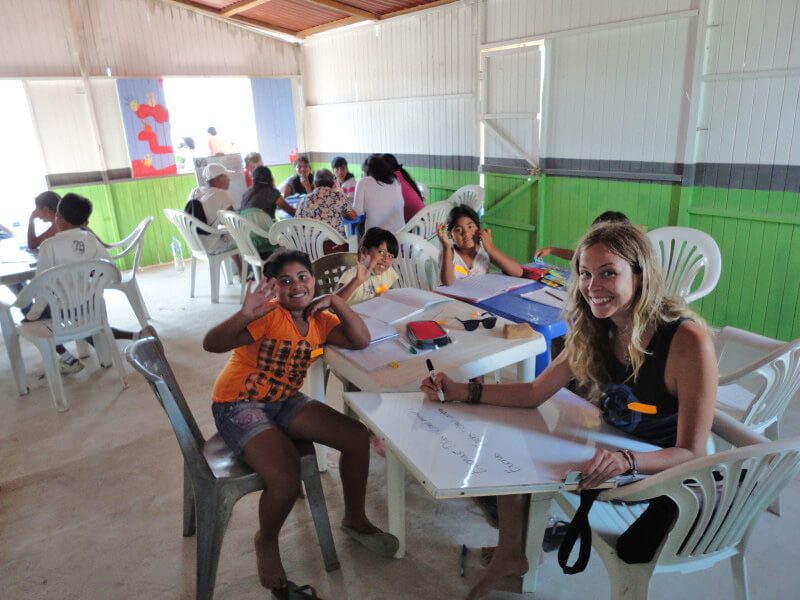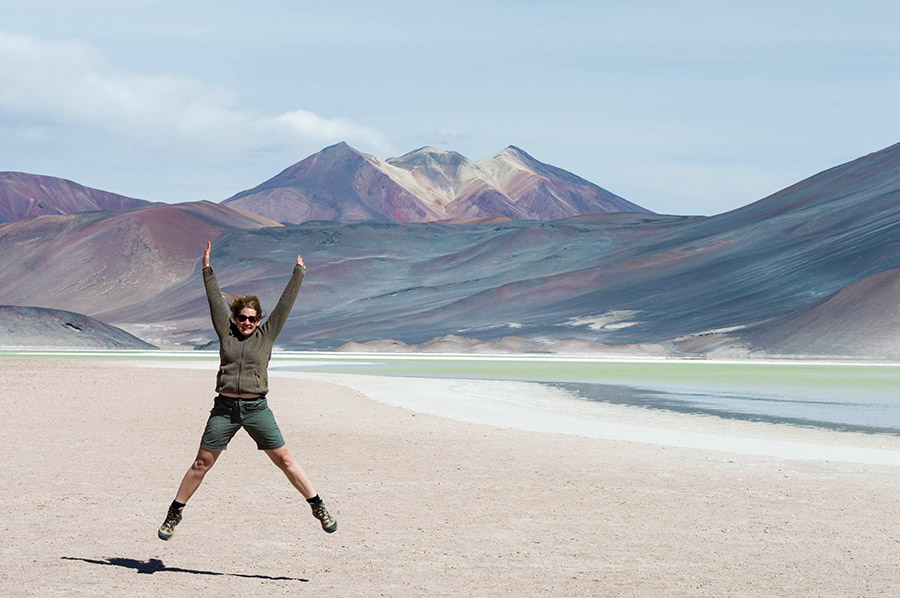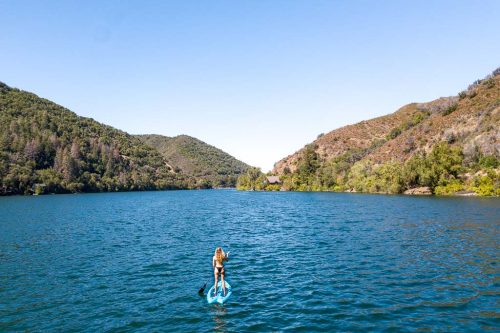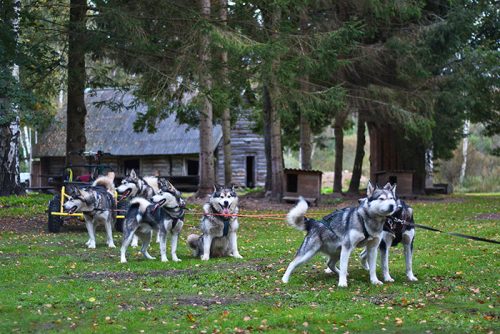South East Asia might have once been the coolest backpacking hangout, but South America, with its exceptional diversity of cultures and landscapes, is quickly becoming the number one place for a backpacking adventure. But from safety concerns to budgeting and itinerary planning, there are plenty of things that might seem confusing if you’re preparing for your first time backpacking in South America.
Never fear: traveling to South America has never been easier than with this South America travel guide and its eight handy hints and tips for exploring this vast and beautiful continent.
Is it safe to backpack South America?
Before we get any further, let’s deal with the elephant in the room: safety. South America’s long had a bad reputation which, although not completely unfounded, is unfair. Yes, parts of the continent are dangerous for backpackers. But, the vast majority places you’ll likely visit when you’re traveling around South America are incredibly safe.
That’s not to say you shouldn’t exercise caution here. Part of the trick of avoiding South America backpacking dangers is being aware of what’s happening in each city and town you visit and listening to the recommendations of people like hostel owners and locals who are better informed than you.

Additionally, there are a number of really simple ways to help you avoid becoming a victim of theft, such as wearing a travel wallet under your clothing to store larger amounts of cash, using ATMS attached to banks (these are less likely to be tampered with) and leaving your passport locked in your hostel while out exploring. Most importantly, remaining alert when you’re out and about – and not drinking too much so that you’re an easy target – is the recipe for staying safe and sound.
Watch out for the scams
Like any part of the world, there are certain scams to which backpackers are easy prey. In big South American cities, diversion scams are common, often involving ketchup or another liquid being thrown on you and a seemingly innocent onlooking who comes to help… but actually steals your wallet!
The golden rules of backpacking in South America are simple: never leave your valuables on the floor or overhead on a bus, use radio taxis not cabs on the street and keeping a close eye on your rucksack in bus stations. In many cities, ride share apps like Uber and Lyft are becoming increasingly more available and easy to use. In Medellin, Colombia, calling an Uber to get around actually worked out cheaper than a taxi and was a lot less worrisome.
The main scams and ways to deal with them are widely documented on the internet, so do a bit of quick reading before traveling to South America to make sure you don’t fall victim.

Is it safe to travel as a woman?
Solo female travelers might feel intimidated by the idea of backpacking in South America. Sure, it’s a region known for machismo and there’s no way of escaping the sexual harassment that many women experience traveling here. It might make you feel a little uncomfortable, but be prepared for some long stares and the occasional wolf whistle.
Attitudes towards women are slowly changing and while it’s never recommended that female backpackers wander the streets late at night or hitchhike alone, most feel comfortable traveling around South America. And while women receive plenty of attention from local men, it’s also not uncommon to have men become protective and determined to look after you on your travels. Conservative gender roles in a lot of places still place men as the designated ‘protectors’, so rest assured there will be someone out there that has your back!
How much does it cost to travel in South America?
If you’ve only ever backpacked in South East Asia, you might be surprised by how travel in South America isn’t as cheap as you thought. Start your South America backpacking trip in Chile and you’ll find that your well-earned cash isn’t going to go very far.
But that’s not the case throughout the continent, as prices vary considerably. Bolivia is the ultimate place for cheap South American travel, where a three-course lunch in the market can set you back $3 and decent hostels rarely cost more than $7 per night.

Peru, Ecuador and Colombia aren’t too much more expensive to visit, while Argentina, thanks to huge inflation and the disappearance of the “blue dollar” (a good exchange rate from American dollars to Argentine Pesos) is becoming increasingly expensive.
Cheap South America travel isn’t impossible though. To keep costs down, take buses rather than flights and always book tours from local companies rather than those run by foreign agencies. Tours run by foreign companies are overpriced compared with those run by local businesses.
Bear in mind too that haggling isn’t common in most countries here and avoid bartering tours and souvenirs down to rock-bottom prices – that extra $2 you shaved off probably means a lot more to the local people than it does to you.
But there are other ways of finding cheap South America travel
If you’re concerned about your budget for backpacking in South America, there are ways of prolonging your travels without spending more money.
Your best options are Workaway and Helpx, both of which have listings of farms and hostels looking for volunteering in exchange for food and board. Plenty of backpackers use these websites to move through the continent, establishing roots in cities and towns along the way.

There are also plenty of volunteering opportunities around. Work with local people, save money by sticking in one place of a while and do something good for a local community, all at the same time.
Do I need to speak Spanish for traveling around South America?
Plenty of travelers arrive in South America without speaking even a gracias or a hola in Spanish. And you know what? They survive! Sure, they’re guaranteed to find themselves in plenty of confusing conversations, where the only way to get the taxi driver to understand where they want to go is through a frustrating game of charades. But you can backpack South America without Spanish.

However, picking up even the most basic words goes a long way. It’s recommendable to start your trip with a few weeks studying in one of the main (and cheap) learning hubs, such as Sucre in Bolivia, Quito in Ecuador or Buenos Aires, Argentina. A homestay, where you live with a local family, is also an excellent way of immersing yourself in Spanish and learning quickly.
After a few weeks of study, not only will you come away feeling more confident about traveling, but you’ll suddenly find that you can communicate with local people, making the whole backpacking experience even more rewarding.
Don’t expect to book everything online
Many parts of South America are still only just emerging as popular tourist destinations, which is great if you’re hoping to get away from the crowds. However, because of this, you might struggle to find information about bus routes or even hostels and accommodation online.
The joys of the internet are slowly making their way to all parts of South America, but for the time being it’s often best to rely on booking your transport directly at local bus stations. Similarly, much of the accommodation available in many countries has yet to find its way onto Hostelworld or Booking, so don’t be too worried if there’s not much choice when you search a town online. You’re guaranteed to find more options when you arrive.
South America is huge! So don’t try and see it all in one go
As a continent that is ten times the size of Alaska, it’s fair to say that you’re never going to see more than a tiny proportion of South America when backpacking. Too many travelers make the mistake of jamming six or more countries in as many weeks, an itinerary that allows them to see some of the highlights but ends up being exhausting and only skimming the surface of what each nation has to offer.

Before planning to backpack South America, first consider the absolute “unmissables” on your list, places such as Machu Picchu, Iguazú Falls, The Galapagos Islands and Torres del Paine National Park.
Then, think about exactly what you want to get out of your trip: Fancy hiking and camping? Head to Patagonia.
Want to hit up the beach or venture into the mysterious depths of the Amazon Jungle? Brazil’s got your name on it.
Does getting off-the-beaten-path and exploring ancient ruins and barely-known cities sound more your style? Colombia is your ideal destination.
Ultimately, the best bit about backpacking in South America is that fact that one trip is never enough – and you’ll never be stuck for an excuse to come back!








I would love to travel through South America some day.
It’s such an amazing area in the world! Hope you get there some time soon!
Thank you for a lot of useful tips!
Nice to read your articles 🙂
Helpful tips!